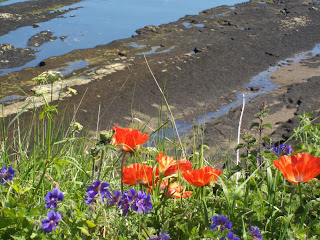It's Graduation Week in St Andrews. From now until Friday proud families will watch their grown-up children have degrees conferred upon them from the oldest university in Scotland. How strange to think that, but for warring kings and squabbling clerics, it might have been a few centuries more before Scotland decided that it needed a university at all.
Centuries ago Scottish students travelled to England and the Continent to study, but in 1296 the Wars of Independence began. Less Scots went to England to study, going instead to universities in France, Italy or Spain.
Then, in 1378 Pope Gregory X1 died and the Roman Cardinals elected Bartolomeo Prignano, Archbishop of Bari, to be Pope Urban V11. They quickly regretted their decision when the new pope proved himself to be suspicious, overbearing and in possession of an uncontrollable temper. Before the end of the year the majority of those who had elected Urban no longer supported him. Another election was held and Robert of Geneva was elected as Pope Clement V11. So now there were two popes. Urban V1 remained in Rome while Clement V11 establishes a rival Papal Court in Avignon. This was the start of what came to be known as the Western Schism.
Urban was supported by the Holy Roman Empire, Denmark, Flanders, Hungary, Northern Italy, Norway, Poland, Sweden and England.
Clement was supported by France, Aragon, Castile, Leon, Cyprus , Burgundy, Savoy, Naples and Scotland.
By 1394 both of the original popes had died, but the Schism deepened. Boniface 1X had been elected Pope in Rome and Benedict X111 in Avignon. When Boniface 1X died in 1404 the Roman cardinals offered to refrain from electing a new pope if Benedict X111 would resign. Benedict did not agree to this, even though France withdrew its support and tried to pressure him into resigning. Scotland still supported Benedict, and so the only universities now open to Scots students were in Spain.
St Andrews monastery has been known as a place of learning for many years and in the early 15th century masters and doctors returning from France gathered in the town and started teaching with the support of James Bisset, Prior of St Andrews and Thomas Stewart, the Archdeacon.
On the 25th February 1412 Bishop Henry Wardlaw formally incorporated members of this school as a "university". It could not, however, grant degrees. The authority to do that could only be granted by the Pope or the Holy Roman Emperor. The Holy Roman Emperor did not agree with Scotland's choice of pope and so Benedict X111 was approached on behalf of the school and the Church of St Andrews and also the King and the Estates. Benedict needed to keep the support of Scotland, and so on 28th August 1413 issued the Papal Bulls which established St Andrews as Scotland's first university.
The Bulls arrived in St Andrews in February 1414 to great celebration in the town, and many events are planned for celebration of its 600th anniversary in 2014.
The most famous recent graduate of the University of St Andrews is, of course, Prince William, but the university has been responsible for the education of many mathematicians, writers, scientists, psychologists and journalists.... and, of course, Malcolm, who has left his mark on the left-hand side of the gateway into St Salvator's Quad.






